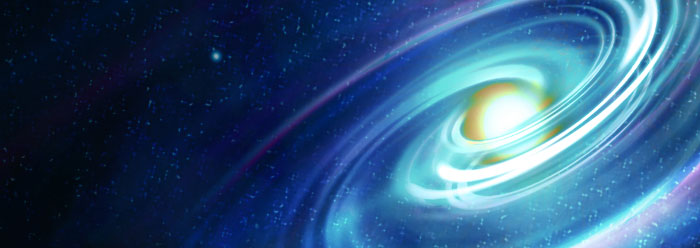In March 2014, a team of radio astronomers using the BICEP2 telescope announced purported direct evidence for inflation, an important part of the Big Bang model.1 But only two months after this “discovery” a number of secular scientists have become increasingly skeptical.2
The original Big Bang model had a number of serious problems, including its own version of the starlight and time problem.3 In order to rescue the Big Bang from these difficulties, secular scientists proposed inflation as an ad hoc tack on to the original model. Originally, inflation was said to be an extremely rapid but very short-lived growth spurt that occurred early in the history of the universe. However, more recent ideas about inflation are radically different from those earlier versions of inflation theory.4
This recent claimed proof for inflation consisted of faint, swirly patterns in low-energy background radiation from space, the cosmic microwave background radiation (CMBR). These patterns, called “B-mode polarization,” were said to have been imprinted on this radiation as a result of the inflation process. Secular scientists interpret the CMBR to be an “afterglow” from a time about 400,000 years after the supposed Big Bang. Some Christians who argue that God used the Big Bang as a means to create the universe eagerly but uncritically accepted this claim.5
Because inflation is a component of the Big Bang model, which so clearly contradicts the biblical account of creation contained in inerrant Scripture, Christians should have known that this alleged “proof” would eventually be shown to be false. At the time, ICR urged readers to resist the temptation to embrace such secular origins stories, which are constantly changing. Likewise, we pointed out a number of serious scientific problems with this claim.6
However, even we could perhaps be excused for being surprised at just how quickly this claim began to fall apart. Only two months after this announcement, a number of secular scientists have become increasingly skeptical about the validity of this claimed discovery.2 A recent analysis is suggesting that this polarization pattern—rather than being caused by inflation—could actually be caused by something much more mundane: dust within our own galaxy.
Such dust can emit microwaves that mimic this polarization pattern, and it is possible that this dust is responsible for most (if not all) of this signal. The BICEP2 scientists had considered this possibility in their analysis, but concluded, based upon a map of this “galactic foreground” microwave radiation, that the effect would be negligible. But it appears that they failed to consider the fact that this radiation map may have also included an un-polarized “haze” from other galaxies. This haze caused them to underestimate the true amount of polarization in microwaves from within our own galaxy, which in turn apparently caused them to overestimate the strength of the polarization signal that supposedly resulted from inflation.
Inflation expert Paul Steinhardt (who has himself become increasingly critical of the inflation theory) said, “At this time, I think the fair thing to say is that you cannot claim detection [of the ‘inflation’ signal] – period.”2 This should serve as a reminder to Christians of the dangers in embracing secular origins stories. Dramatic “proofs” of the evolutionary story that are trumpeted in the media will eventually be shown to be false, and sometimes this happens much sooner than later.
References
- Overbye, D. Space Ripples Reveal Big Bang's Smoking Gun. New York Times. Posted on nytimes.com March 17, 2014, accessed March 17, 2014.
- Cho, Adrian. Doubts Shroud Big Bang Discovery. Science. Posted on sciencemag.org May 19, 2014, accessed May 21, 2014.
- Lisle, J. 2003. Light-travel time: a problem for the Big Bang. Creation. 25 (4) 48-49.
- Steinhardt, P.J. 2011. The Inflation Debate. Scientific American. 304 (4) 36-43.
- Zweerink, J. Inflation's Smoking Gun. Posted on reasons.org April 21, 2014, accessed May 21, 2014.
- Hebert, J. 2014. 'Smoking Gun' Evidence of Inflation? Creation Science Update. Posted on icr.org March 21, 2014, accessed May 21, 2014.
* Dr. Hebert is Research Associate at the Institute for Creation Research and received his Ph.D. in physics from the University of Texas at Dallas.
Article posted on June 6, 2014.

















